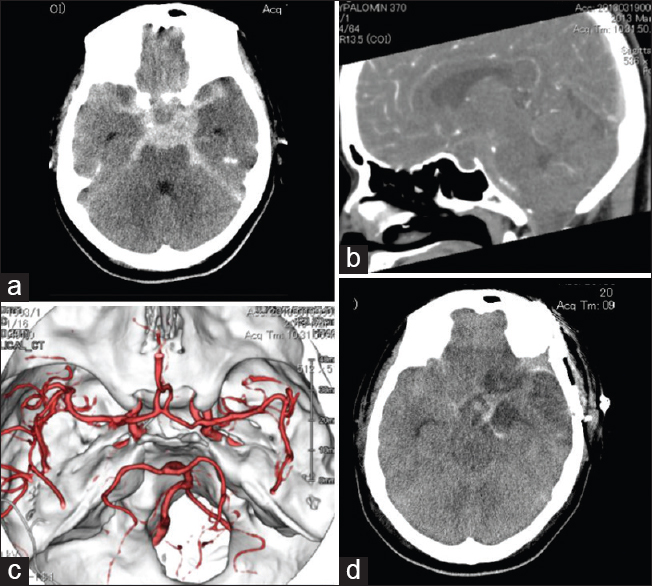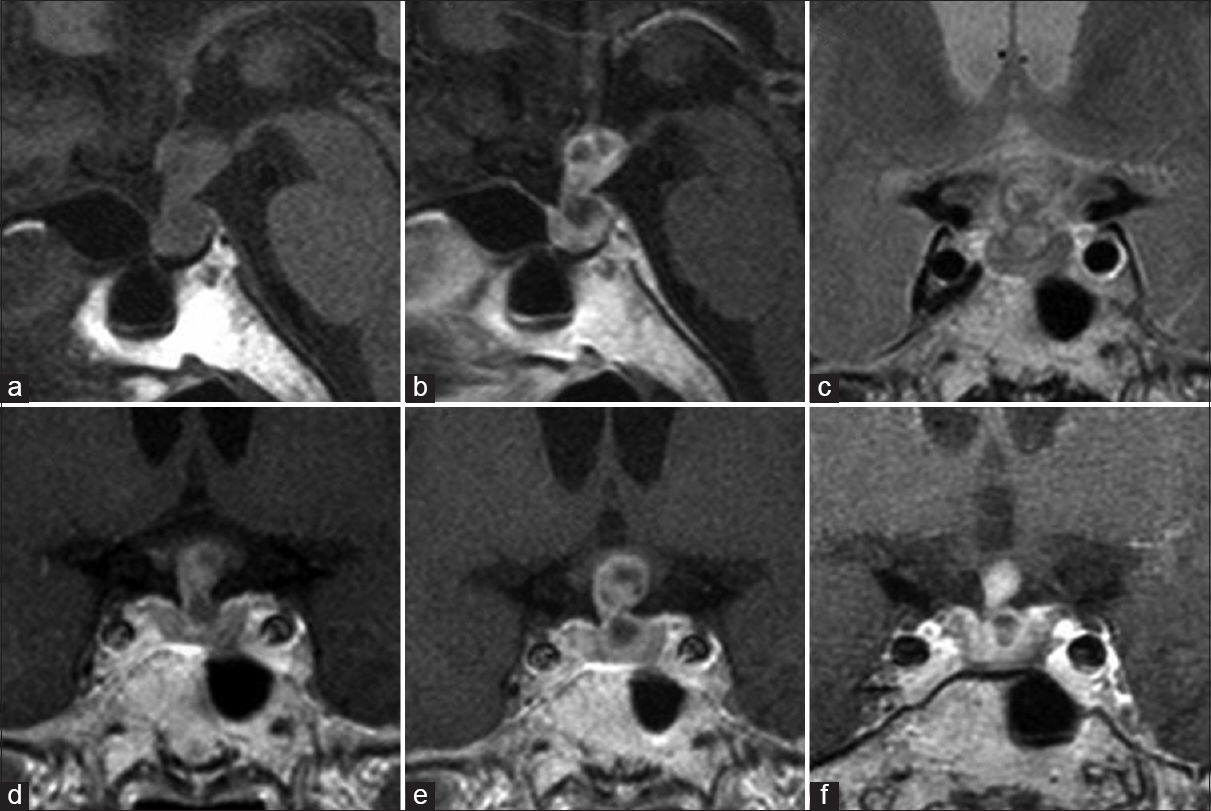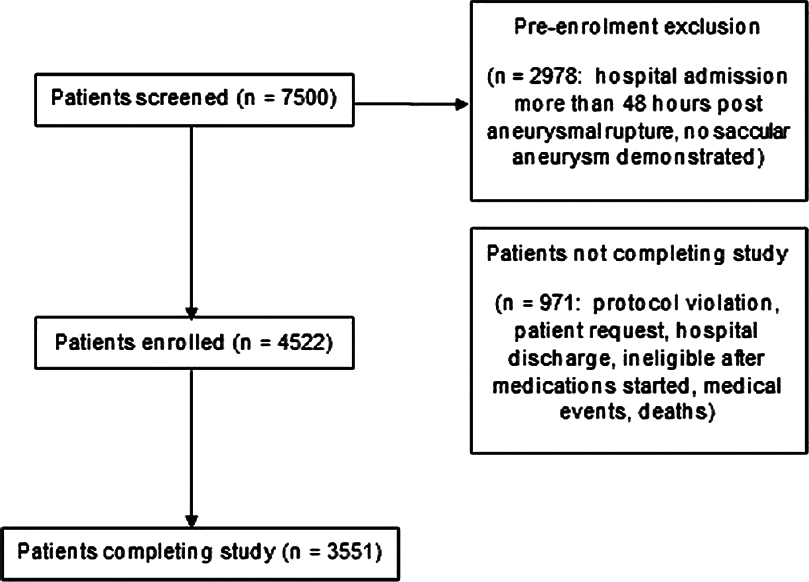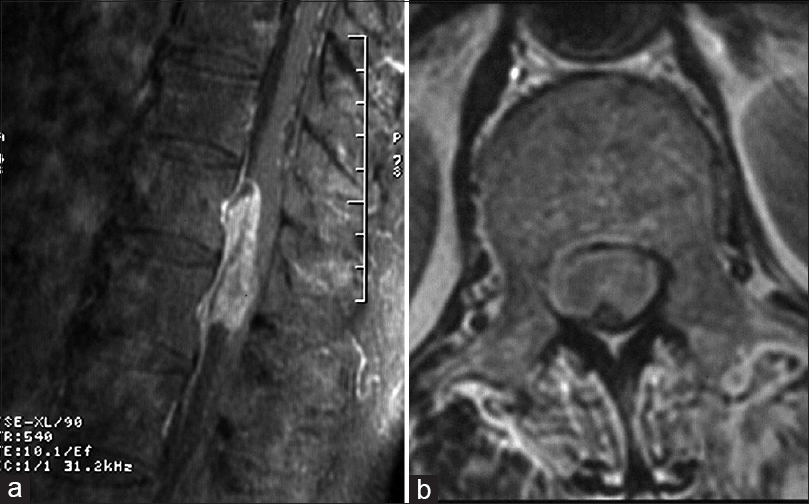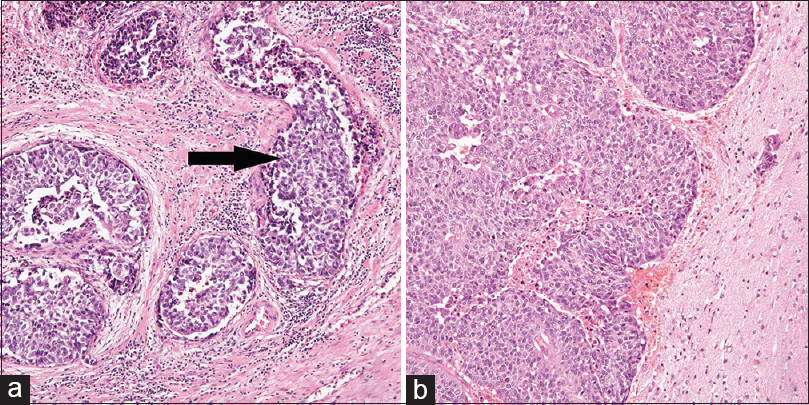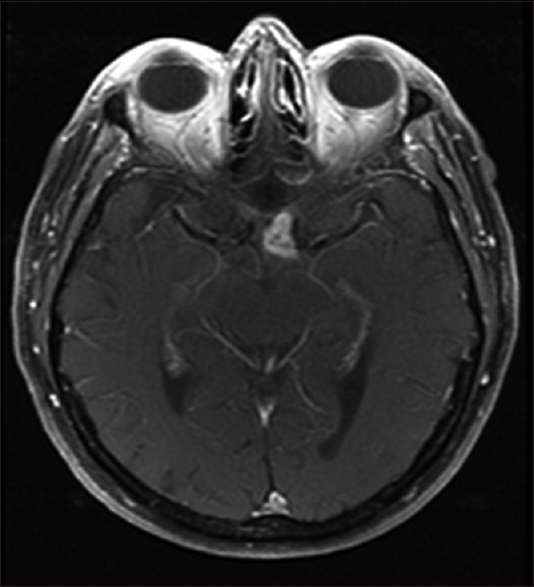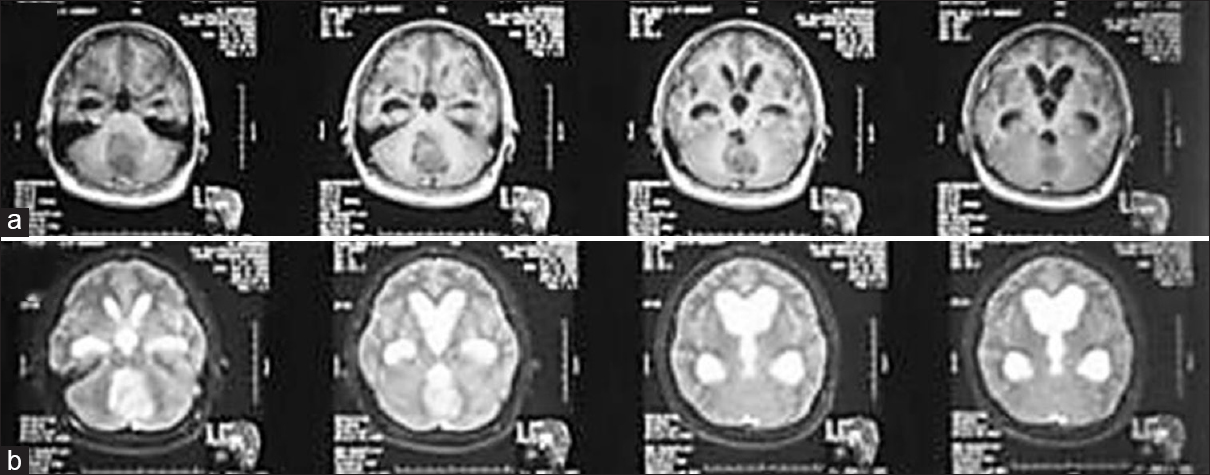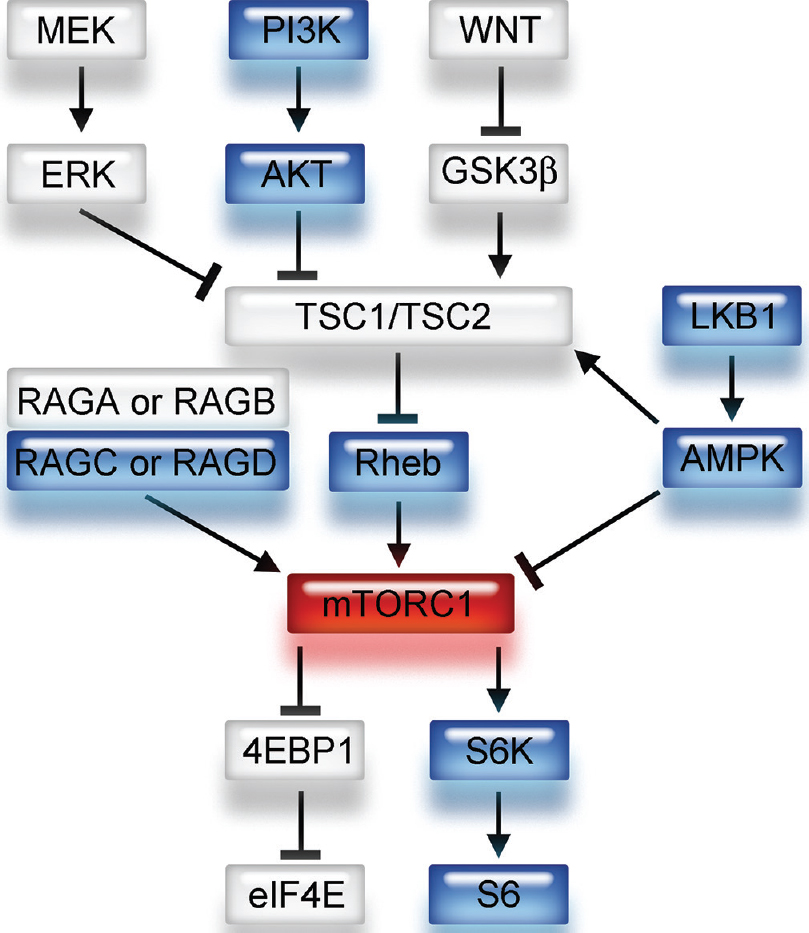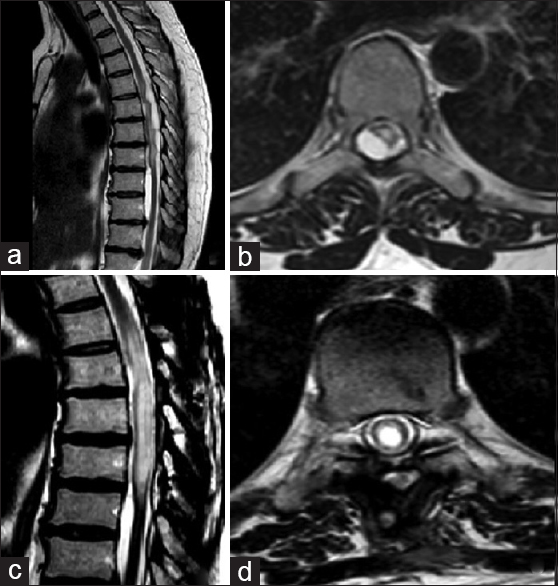Subarachnoid hemorrhage caused by an undifferentiated sarcoma of the sellar region
Date of publication: 07-Jul-2016
Background:It is rare for patients with pituitary apoplexy to exhibit concomitant subarachnoid hemorrhage (SAH). Only a handful of patients with pituitary apoplexy have developed such hemorrhagic complications, and histopathological examination revealed pituitary adenoma as the cause of SAH.
Operative surgical nuances of modified extradural temporopolar approach with mini-peeling of dura propria based on cadaveric anatomical study of lateral cavernous structures
Date of publication: 07-Jul-2016
Background:Extradural temporopolar approach (ETA) has been modified as less invasive manner and named as trans-superior orbital fissure (SOF) approach with mini-peeling technique. The present study discusses the operative nuances of this modified technique on the basis of cadaveric study of lateral cavernous structures.
Xanthomatous hypophysitis associated with autoimmune disease in an elderly patient: A rare case report
Date of publication: 07-Jul-2016
Background:Xanthomatous hypophysitis (XH) is an extremely rare form of primary hypophysitis characterized by infiltration of the pituitary gland by mixed types of inflammatory cells, including foamy cells, plasma cells, and small mature lymphocytes. XH manifests as varying degrees of hypopituitarism. Although several previous reports have denied a possible contribution of autoimmune mechanism, the exact pathogenesis of XH remains unclear.
Aneurysmal subarachnoid hemorrhage prognostic decision-making algorithm using classification and regression tree analysis
Date of publication: 07-Jul-2016
Background:Classification and regression tree analysis involves the creation of a decision tree by recursive partitioning of a dataset into more homogeneous subgroups. Thus far, there is scarce literature on using this technique to create clinical prediction tools for aneurysmal subarachnoid hemorrhage (SAH).
Multicentric spinal cord and brain glioblastoma without previous craniotomy
Date of publication: 07-Jul-2016
Background:Glioblastoma multiforme (GBS) is a highly malignant glioma that rarely presents as an infratentorial tumor. Multicentric gliomas lesions are widely separated in site and/or time and its incidence has been reported between 0.15 and 10%. Multicentric gliomas involving supratentorial and infratentorial region are even more rare. In most cases, infratentorial disease is seen after surgical manipulation or radiation therapy and is usually located in the cerebellum or cervical region.
Metastatic brain tumor from urothelial carcinoma of the prostatic urethra
Date of publication: 07-Jul-2016
Background:Urothelial carcinoma occurs in the bladder, upper urinary tract, and lower urinary tract, including prostatic urethra. A majority of the reported cases of intracranial metastasis from urothelial carcinoma originates from the bladder and upper urinary tract. Brain metastasis from urothelial carcinoma of the prostatic urethra has not yet been reported in the literature.
Glioblastoma multiforme of the optic chiasm: A rare case of common pathology
Date of publication: 07-Jul-2016
Background:Malignant optic and chiasmatic gliomas are extremely rare, and are classified pathologically as anaplastic astrocytoma or glioblastoma multiforme (GBM). Approximately 40 cases of optic GBM in adults have been reported in the literature, and only five of them were described to originate from the optic chiasm.
Adult medulloblastoma: A rare case report and literature review
Date of publication: 07-Jul-2016
Background:Medulloblastoma is a highly malignant embryonal tumor which commonly arises in the cerebellum. It is relatively rare and accounts for less than 2% of all primary brain tumors. The tumor primarily occurs in childhood; however, rarely, it may be found in adult population. In addition, medulloblastoma in adult population shows features which are quite distinct from the pediatric group.
mTORC1 signaling in primary central nervous system lymphoma
Date of publication: 07-Jul-2016
Background:Mammalian target of rapamycin (mTOR) complex 1 (mTORC1) acts as a downstream effector of phosphatidyl-inositol-3 kinase, which is frequently hyperactivated in glioblastoma multiforme and links to cell signaling in cellular proliferation, differentiation, metabolism, and survival. Although many studies have suggested the importance of mTORC1 in tumorigenesis, its role remains unclear in brain tumors other than glioblastoma.
Intramedullary cyst formation after removal of multiple intradural spinal arachnoid cysts: A case report
Date of publication: 07-Jul-2016
Background:A rare cause of spinal cord compression is spinal arachnoid cysts. Symptoms are caused by spinal cord compression, however, asymptomatic patients have been also reported. Treatment options depend upon symptom severity and clinical course.


